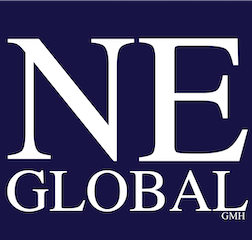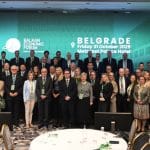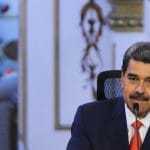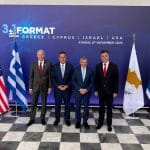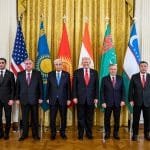U.S. President Donald Trump apparently has no more refined strategy than to disrupt the flow of world business/diplomacy with an outrageous opening salvo in order to make progress on his “deals.” Using that same playbook, news trackers everywhere were forced on November 21 to change focus from Black Friday sales across the industrialized world, or perhaps forget the COP30 endgame or even the distant G20 meetings in Johannesburg, in order to focus on what first appeared to be a dark echo of last August, when President Trump met with Russian President Vladimir Putin in Anchorage Alaska to resolve the Ukraine war by themselves. Except this was no random reflection or sensor glitch, it was a new U.S. peace proposal for ending the Ukraine war, complete with another Trump acceptance ultimatum, this time set for the November 27 U.S. Thanksgiving holiday, which two days later he clarified was “not his final offer.”
Munich-style betrayal or a starting point?
World leaders are still unable to verify the source of the so-called “U.S. proposal,” the substance of which was quickly leaked in Washington. Claims and counterclaims were made that the offer was both a “Russian wish list” adopted to start the ball rolling, with the Trump White House claiming nonetheless that it was a U.S. proposal developed by Trump’s Special Envoy Steve Witkoff and Secretary of State/National Security Advisor Marco Rubio, and (possibly?) their experts.
Witkoff, not known to have any substantive Russia/Ukraine or diplomatic expertise before this year — and that is clearly visible from the crude non-diplomatic terminology used in the proposal — reportedly consulted with senior Kremlin official Kirill Dmitriev, an economist, on the proposal. Unsurprisingly, Russian President Vladimir Putin quickly labeled the plan, loaded with enticing references to future U.S.-Russia economic cooperation, “an acceptable basis for negotiations.”
Terms of the proposal favor Moscow
Among the key points of the 28-point plan, Ukraine is being asked to cede the entirety of Crimea, Luhansk and Donetsk to Russia – despite Ukraine still controlling a third of the industrial Donetsk region. Kherson and Zaporizhzhia would be frozen along the existing lines of conflict. All of these territorial concessions were previously considered unacceptable to Ukraine.
Ukraine’s army, currently Europe’s largest (excluding Russia) at roughly 880,000 troops, would be reduced to 600,000 as part of the deal.
Security guarantees are a critical part of the proposed arrangement, but NATO was not consulted as the plan was developed. The proposal stipulates that “a comprehensive non-aggression agreement will be concluded” between Russia, Ukraine and Europe. Ukraine’s sovereignty will be confirmed, and NATO will cease expanding further. Ukraine must also remain a non-nuclear state.
Ukraine must agree to enshrine in its constitution that it will not join NATO, and NATO must likewise agree to include in its statutes a provision that Ukraine will not be admitted in the future. NATO must also agree not to station troops in Ukraine. European fighter jets will be stationed in Poland, not Ukraine, in this arrangement. The plan also states that Ukraine is eligible for EU membership, as if the Trump administration actually had any voice in that decision.
The plan declares that “Ukraine will receive reliable security guarantees,” and also that “the U.S. will receive compensation for the guarantee.” It warns that “if Russia invades Ukraine, in addition to a decisive coordinated military response, all global sanctions will be reinstated, recognition of the new territory and all other benefits of this deal will be revoked.”
The economic component of the proposal reveals that Trump’s business instincts are deeply in play. Under the plan, “the lifting of sanctions will be discussed and agreed upon in stages and on a case-by-case basis,” which acknowledges that Washington is not alone in the driver’s seat here as the sanctions that really harm Moscow’s economy concern energy trade with Europe. As noted above, it offers incentives to Moscow, stating that Russia will be invited to rejoin the G8 and promising Moscow another Trump-style undefined long-term economic cooperation agreement.
Under the U.S. plan, only $100 billion in frozen Russian assets will be invested in U.S.-led efforts to rebuild and invest in Ukraine, and Europe will be asked to contribute the same amount. The plan calls for the creation of a Ukraine Development Fund with World Bank support.
Apparently the other frozen Russian assets will be released to Moscow in stages, and this plan will certainly disrupt ongoing EU efforts to agree on the financial mechanism to tap into all of the frozen Russian assets in Europe as a source to support the Ukrainian economy. Some observers are already pointing to this as a backhanded Putin negotiating ploy to derail progress there as well as an effort to forestall additional tough U.S. sanctions. Trump’s plan also foresees the creation of a separate U.S.-Russian investment vehicle for these to-be-unfrozen funds. By any measure, the plan in the current form is a huge boost to Moscow, maybe even to some on Wall Street, and will certainly be problematic.
Negotiations to continue
Ukraine has reacted cautiously to the latest Trump administration gambit, knowing the cost of angering Trump by failing to salute his peace efforts. Both Ukrainian President Volodymyr Zelenskyy and European leaders (mostly caught by surprise at the G20 meetings in Johannesburg without an American official present) know the Trump playbook at this point and have successfully presented measured responses, noting that the U.S. plan, intentionally developed without them, is a basis for progress but can and should be improved. Europe is said to have developed new counterproposals. On November 23 Trump went as far as to call the Ukrainians “ungrateful” in a Truth Social post, raising the pressure again even after having admitted earlier that his proposal was not the final offer.
Never one to close off negotiations, Trump dispatched Rubio and Witkoff to meet senior Ukrainian and EU officials in Geneva on November 23. Rubio’s initial readout of the meeting’s progress was extremely positive, calling it a “very good day,” and stating that President Trump is satisfied with the progress made, generating a narrative that the peace proposal is a real basis for a solution. A ceasefire was not mentioned, but talks will continue.
